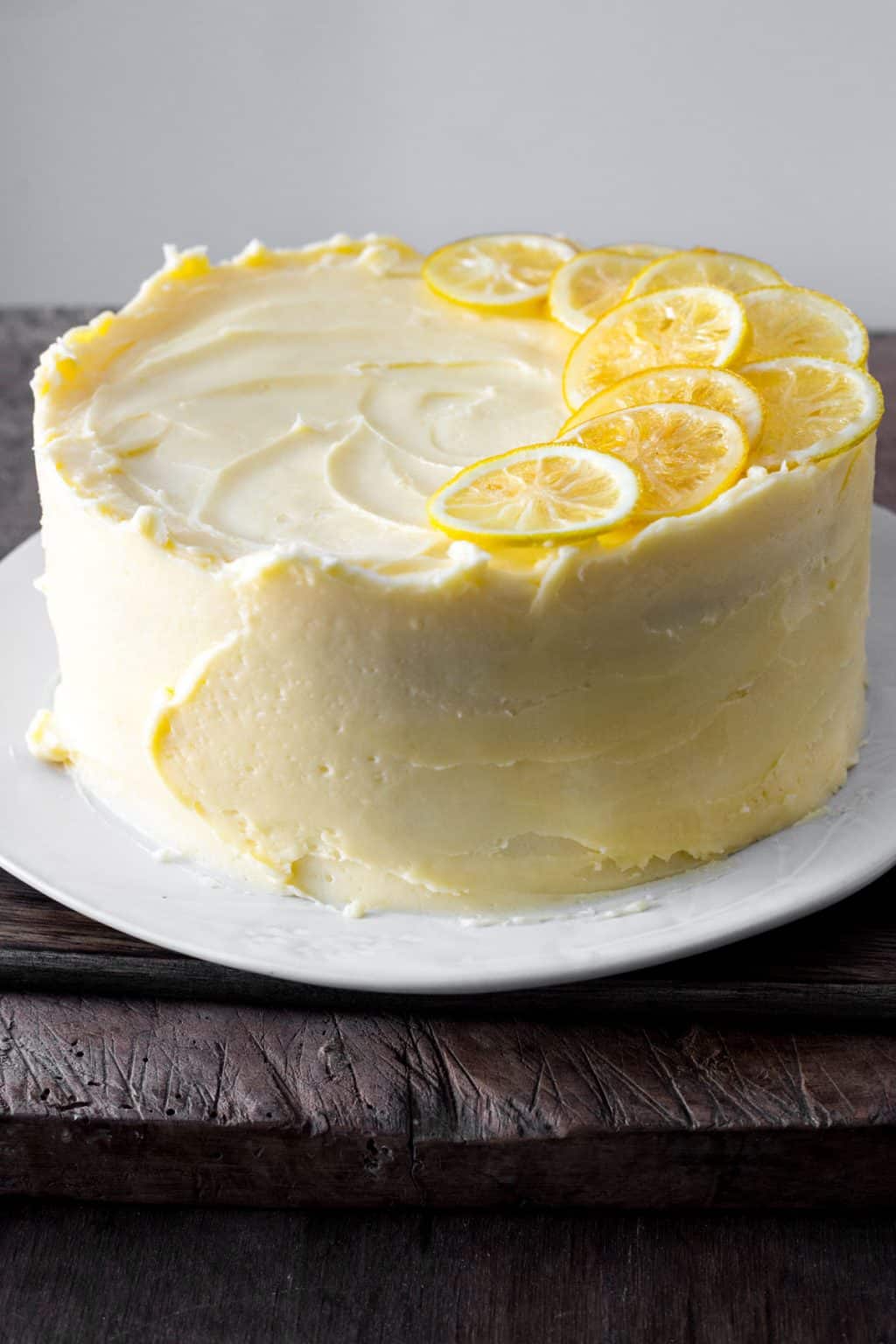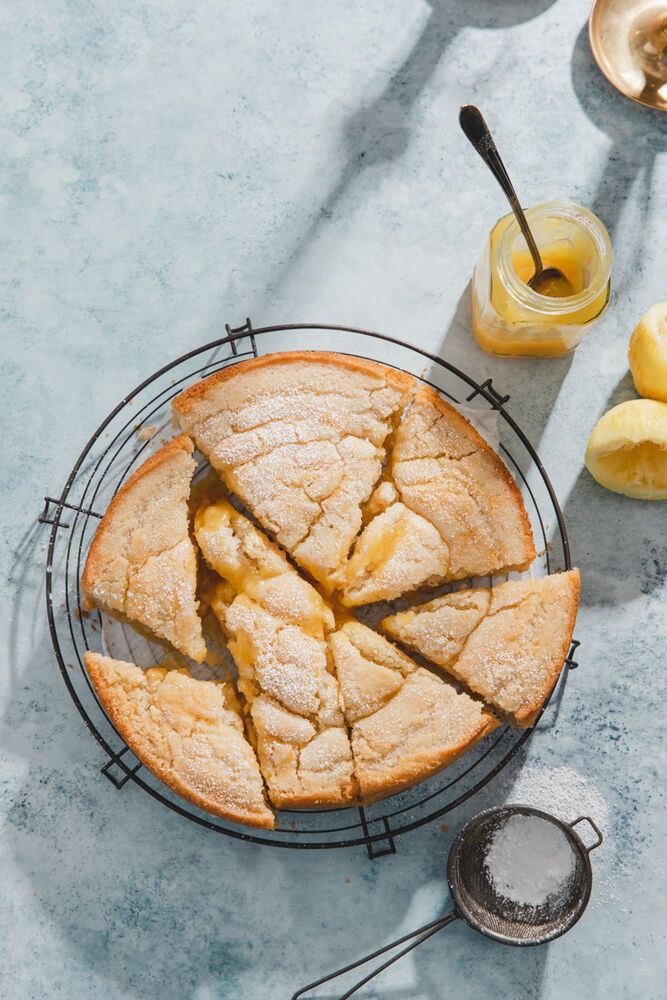This Gluten-Free Lemon Curd Cake is the perfect choice for any special occasion, bursting with vibrant citrus flavor. It features a layer of homemade lemon curd sandwiched between fluffy lemon and vanilla-infused sponge cakes, all topped with a light and airy lemon curd Swiss meringue buttercream. I’ll guide you through each step of the recipe, sharing helpful tips and advice to ensure this becomes the best gluten-free lemon cake you’ve ever tasted.
INGREDIENTS
For the Cake:
- 320g caster sugar
- Zest of 2 lemons
- 240g unsalted butter, room temperature
- 6 medium eggs
- 2 tsp vanilla extract
- 180g gluten-free plain flour
- 180g almond flour (ground almonds in the UK)
- 1½ tsp baking powder
- ¾ tsp salt
For the Lemon Curd Filling:
- 150g lemon curd
For the Lemon Curd Buttercream:
- 210g egg whites (about 7 medium eggs)
- 350g caster sugar
- 490g unsalted butter
- 150g lemon curd
- ¼ tsp salt

INSTRUCTIONS
- Preheat the oven to 180°C/160°C fan/gas mark 4. Grease and line two 8-inch round cake tins.
- Beat the sugar, lemon zest, and butter together until light and fluffy.
- Add the eggs one at a time, mixing well after each addition.
- Stir in the vanilla extract.
- In a separate bowl, whisk together the gluten-free flour, almond flour, baking powder, and salt. Gradually add this dry mixture to the wet ingredients, mixing until well combined.
- Divide the batter evenly between the two cake tins and bake for about 30 minutes, or until a toothpick inserted into the center comes out clean.
- Remove the cakes from the oven, let them rest in the tins for 5 minutes, then transfer to wire racks to cool completely.
Lemon Curd Swiss Meringue Buttercream
- Heat the egg whites and caster sugar in a bain-marie or double boiler, whisking constantly until the mixture reaches 71°C.
- Remove from heat and transfer to a stand mixer with a whisk attachment. Whisk until the mixture forms stiff peaks and cools down to about 32°C.
- Switch to a paddle attachment. Slowly add the butter, cube by cube, mixing on low speed. The mixture may look curdled — don’t worry, this is normal. Continue adding the butter until fully incorporated, and the buttercream becomes smooth and velvety.
- Stir in the lemon curd and salt until fully combined.
Assembly
- Place one sponge layer on an 8-inch cake board and spread lemon curd in the center, spreading it almost to the edges.
- Place the second sponge layer on top and cover the top and sides of the cake with the lemon curd buttercream.
NOTES
- Eggs: Use medium eggs (about 60g with the shell, 50g without). If you can’t find medium eggs, weigh them out. Adding eggs one at a time ensures a lighter sponge.
- Gluten-Free Flour: This recipe uses Doves Farm Gluten-Free Plain Flour, but any gluten-free blend will work. You can also use my homemade gluten-free flour blend.
- Almond Flour: This adds texture to the cake and helps bind the ingredients. The almond flavor is subtle, but if you grind your own almonds, the flavor will be stronger.
- Curdled Batter? If your batter seems curdled after adding the eggs, don’t worry! The butter and eggs contain a lot of fat, so this is normal. The batter will come together once the flour is added.
- Homemade Lemon Curd: I recommend using my easy lemon curd recipe, but store-bought curd is fine if you’re short on time.
- Swiss Meringue Buttercream Tips: If you encounter any issues while making the buttercream, don’t fret — most problems can be easily fixed. See my post for detailed troubleshooting advice.
STORAGE
- Refrigerate: Store the cake in the fridge for up to 3 days. Let it come to room temperature for about an hour before serving.
- Freeze: The entire finished cake can be frozen. After chilling in the fridge to firm up the buttercream, wrap it tightly in cling film and tin foil. It can be frozen for up to 2 months. Defrost completely before unwrapping.
Ingredient Measurements: All measurements are provided in grams, as I prefer to weigh my ingredients for accuracy. If you use US customary measurements, they are based on conversion calculators, but I recommend using a digital scale for best results.
Nutrition Information: The nutritional values are an estimate based on an online calculator. They may vary depending on the specific ingredients you use. For more accurate advice, consult a professional nutritionist. The nutrition info is based on a 16-slice cake serving.







